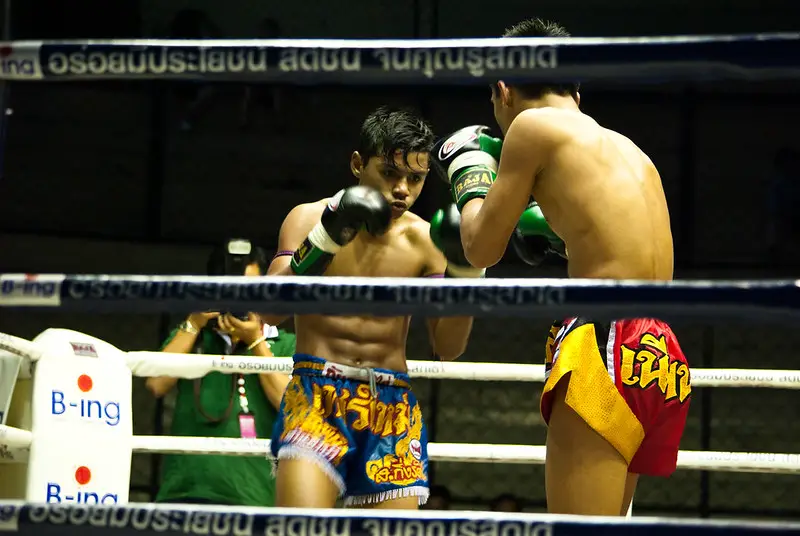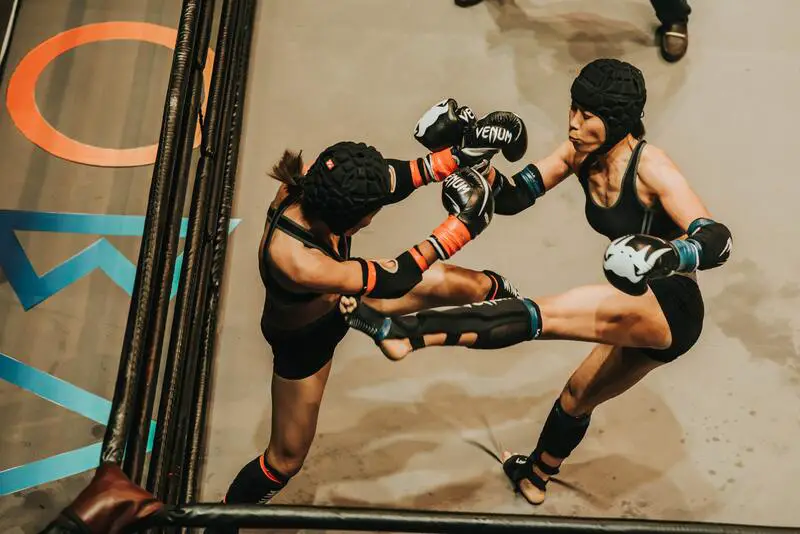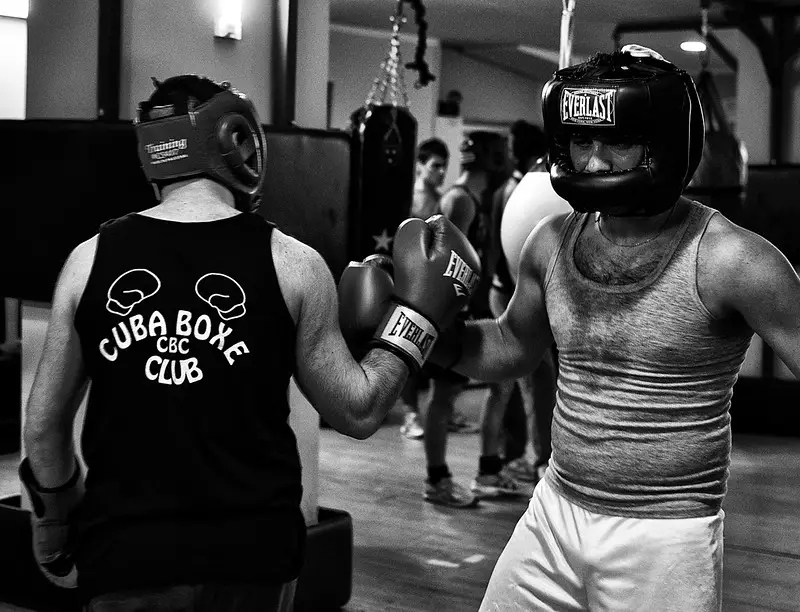Muay Thai is among the most popular sports and many people are interested in discovering how long it takes to learn Muay Thai.
In general, beginners need between 6 months and 1 year to master the fundamentals. An additional 1 year is required to master intermediate skills and start competing in amateur competitions.
Then after another 12–18 months of training, practitioners learn an advanced stage where they can start competing in pro matches.
This is just an overview so be sure to read the rest of this article to learn more about how long it takes to become good at Muay Thai, and how you can progress faster.
How Long To Become Good In Muay Thai?
Beginners may expect to handle the basics in around 6 months to a year. The intermediate level usually requires an additional 1 year of training, 2 in total, while the advanced level requires at least 3 years of consistent training.
This is a level where a practitioner is capable of applying techniques in a real scenario and can start competing in matches.
Bear in mind the time to learn Muay Thai varies. It is based on individual factors like talent, dedication, and quality of coaching. While some may show significant progress in a few months, others might take years to reach a level of proficiency.

Also, it’s crucial to know that the learning curve is not linear. There is no belt testing, or any type of testing. The progress is based entirely on your performance and the subjective opinion of the instructor. So plateaus and breakthroughs are common.
Overall, realistic expectations are paramount for Muay Thai beginners so setting short-term goals is key. Be patient, trust the learning process, show up at least 3 times a week, be persistent, and you will succeed. Everyone does.
How Difficult It Is To Learn Muay Thai?
Training is physically and mentally demanding, and certainly not for everyone. Workouts are intense, hard on your body, and mentally exhausting. You will either be realistic and accept this, or give up after a few sessions.
Here are some of the key reasons why it is so difficult to learn Thai boxing.
- High injury rate — the injury rate stands at 55 injuries per 100 exposures. You can get hurt during sparring (most commonly), intense cardio and strength workouts, or even during a warm-up. It’s not about whether or not you are going to get hurt, it’s about when and how badly.
- Technical Complexity — the system involves a vast array of techniques, including intricate strikes, clinches, and defensive manoeuvres. Learning the technical aspects requires precision and consistent practice, adding an intellectual challenge to the physical demands.
- Exhausting Training Sessions — each session is a mix of aerobic and anaerobic workouts with a few small breaks. It will break you every time no matter how tough you are. But this also helps you build both physical and mental resilience.
- Hard to Stay Motivated — Consistency is crucial in mastering Muay Thai, but the demanding nature of the sport can make it challenging to stay on a regular training schedule. The initial enthusiasm might wane as the difficulty of the training becomes apparent, requiring a strong internal motivation to persist.
Tips for Faster Progression in Muay Thai
Progression in Muay Thai involves several factors that influence the pace of individual progress. Recognizing these factors and adapting your approach to them enables you to significantly improve your skills in a short time, and speed up your progress:
- Be consistent
Show up at least 3 times a week, that’s the minimum if you want to experience any progression in Muay Thai. First, it improves your fitness and technique, keeps you disciplined and focused on achieving goals, and fosters muscle memory which supports skill development. Also, do not take breaks longer than a week or two to rest.
- Choose a reputable school
The quality of the coaching staff you train with has a big influence on your progression in Muay Thai. Skilled and experienced instructors offer invaluable guidance and are great at passing down knowledge, spotting areas you can improve, and motivating your students. In a bad school, you may get stuck at a certain level due to instructors’ inability to upgrade your knowledge and proficiency.
- Stay healthy
Injuries can put you on the sidelines for months and destroy your progress. So be sure to pay extra attention to how you can prevent injuries. This includes enough rest, proper warm-up and cool-down, stretching, wearing protective gear, etc.
- Exercise at home and eat healthy
Adopting healthy eating habits gives you more energy, helps you recover faster, and supports muscle growth, which in the end boosts your performance and progress. The same stands for home exercises. Start stretching during the off days to improve flexibility or do a few rounds of shadow boxing to further sharpen your technique or a strength workout. You can also do sprints or long-distance runs to further improve endurance and cardio. Extra work will certainly pay dividends on the mats.
How Long Before You Can Compete in Muay Thai
The timeline for competing in Muay Thai varies based on individual progress, dedication, and talent. Most importantly, the time you need to spend training before going into competition is primarily based on the instructor’s opinion.
When you feel ready for competition, be sure to talk with your head instructor first. They are the ones who know whether you are ready or not, or what segments you need to improve to be fully prepared. Always respect their opinion and wait for their green light.
Generally, practitioners can participate in amateur matches after approximately six months to a year of consistent training. This period allows for the development of fundamental techniques, conditioning, and a grasp of basic strategies.

Entering professional Muay Thai competitions requires a more extensive commitment and mastery of advanced skills. his timeline varies widely, but a common benchmark is around three to five years of dedicated training.
During this time, fighters not only refine their techniques but also gain valuable experience through amateur and semi-professional matches. This ensures they are well-prepared for the higher intensity and skill level that comes with pro-Muay Thai.
Is Muay Thai Dangerous for Beginners?
Muay Thai, like any contact sport, carries a certain risk of injuries. However, its potential danger for beginners can be largely minimized by proper training, supervision, and safety protocols.
This mix of adapted training, structured environment, experienced instructors, and safety measures significantly reduces the likelihood of injuries.
The following are annual injury rates for different levels:
- Beginners — 13.5 injuries per 1000 participants
- Amateurs — 2.43 per 1000 participants
- Professionals — 2.79 per 1000 participants
Beginners primarily focus on physical exercises to bring their fitness to the required level. They do skill-specific drills that include throwing basic combinations on the heavy bag or pads and mastering the motion. They are gradually introduced to sparring through live drills, and light contact, and they all must wear full-protective gear to minimize the risks.
Beginner injuries in Muay Thai include bruises, swelling, and muscle soreness. However, the majority of severe injuries are caused by the lack of protective gear, poor technique, and lack of supervision. That’s why it is very important to find a reputable school that emphasizes safety precautions for newcomers who are yet to learn how to use Muay Thai techniques the right way.
Muay Thai Beginner Gear
Muay Thai, a dynamic and physically demanding martial art, requires specific gear to ensure safety, comfort, and optimal performance for beginners. Here’s a breakdown:
- Hand Wraps: Essential for wrist and hand protection during training, hand wraps stabilize the wrists and offer support while striking.
- Boxing Gloves: High-quality gloves are crucial for hand protection during bag work, pad drills, and sparring. Beginners often start with 12 to 16 oz gloves for all-around use.
- Shin Guards: Protecting the shins from impact during sparring and heavy bag workouts, shin guards are vital for injury prevention and conditioning.
- Mouthguard: safeguarding the teeth and jaw, a properly fitted mouthguard is essential during sparring sessions to minimize the risk of dental injuries.
- Headgear: While optional in some training scenarios, headgear can provide added protection during sparring, reducing the risk of cuts and bruises.
- Groin Guard: Particularly important for male practitioners, a groin guard protects against accidental low blows during sparring and training.
- Ankle Supports: Offering stability to the ankles, these are beneficial during footwork drills, ensuring protection against twists and sprains.
- Apparel: Comfortable, moisture-wicking clothing that allows for unrestricted movement is crucial for a pleasant training experience.
Investing in proper Muay Thai gear from the outset not only enhances safety but also contributes to a more enjoyable and effective training journey for beginners.
How Does Muay Thai Training Looks Like?
Typically, a session begins with a 10-minute warm-up that includes dynamic stretches and joint mobility drills to prepare the body for the ensuing intensity.
Skill drills
The core of the training involves skill-specific drills, where practitioners learn various Muay Thai techniques such as strikes, clinches, and defensive maneuvers. Pad work with trainers or partners allows for the practical application of these techniques in a controlled setting, fostering muscle memory and precision.
Sparring or live drills
Sparring sessions, whether light or full-contact, often follow, providing an opportunity for practitioners to test their skills in simulated combat scenarios. This phase not only refines technique but also enhances strategic thinking and adaptability.
Cardio and strength
The conditioning segment incorporates strength and endurance training, emphasizing exercises that complement the demands of Muay Thai. This includes bodyweight exercises, weight training, and explosive movements to enhance power and agility.
Cool down
Cooling down and stretching conclude the session, promoting flexibility, aiding recovery, and reducing the risk of injuries. Throughout, the guidance of experienced instructors ensures proper form, technique correction, and a safe training environment.
How Long To Get A Black Belt in Muay Thai
Muay Thai, rooted in Thai culture, lacks a formal belt progression. In Thailand, proficiency is typically gauged through practical skill demonstrations and actual fighting experience.
However, in Western Muay Thai schools, a belt-ranking system is occasionally adopted to provide structure and recognition of a student’s progress. The belts often signify a practitioner’s proficiency level, emphasizing the mastery of techniques, conditioning, and experience in sparring.
The time an individual needs to spend learning Muay Thai to earn a black belt is not standard and varies between schools. On average, achieving the black belt takes between 4–5 years of consistent training.


